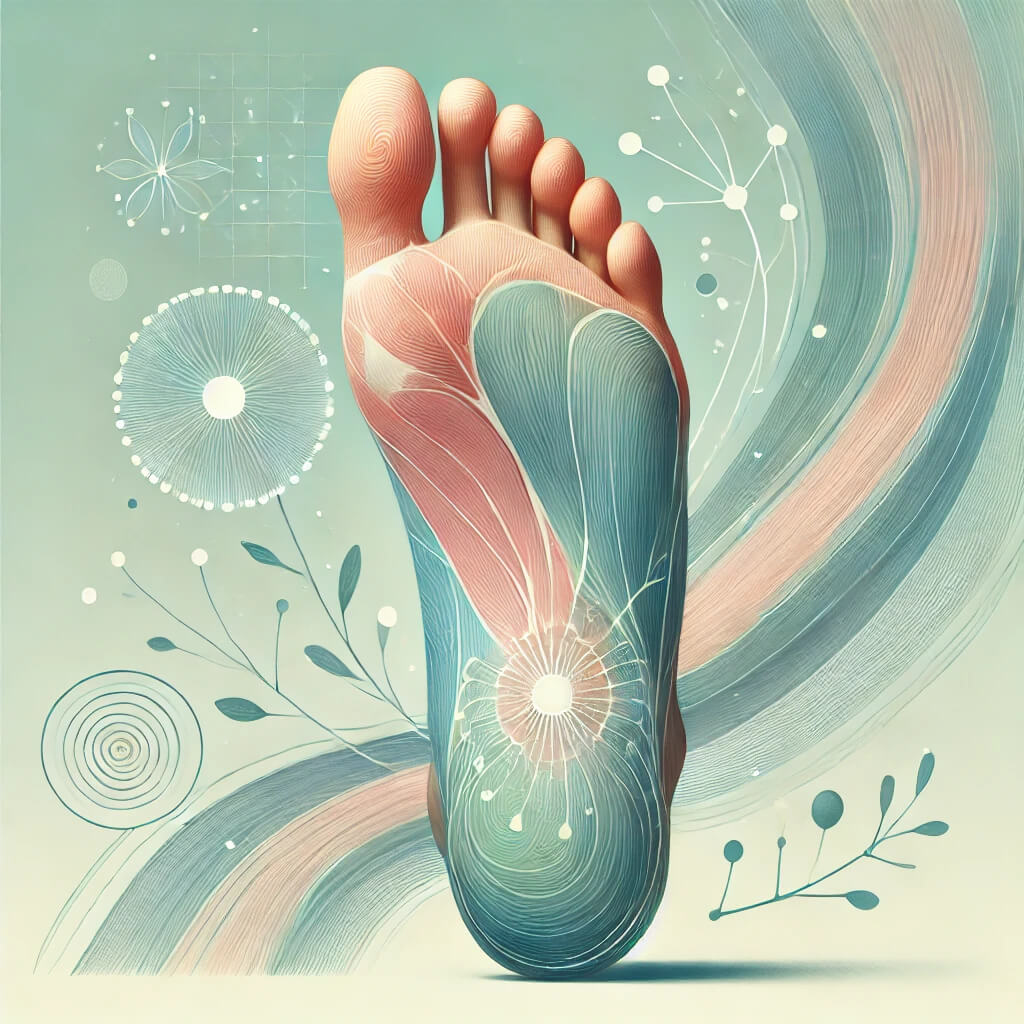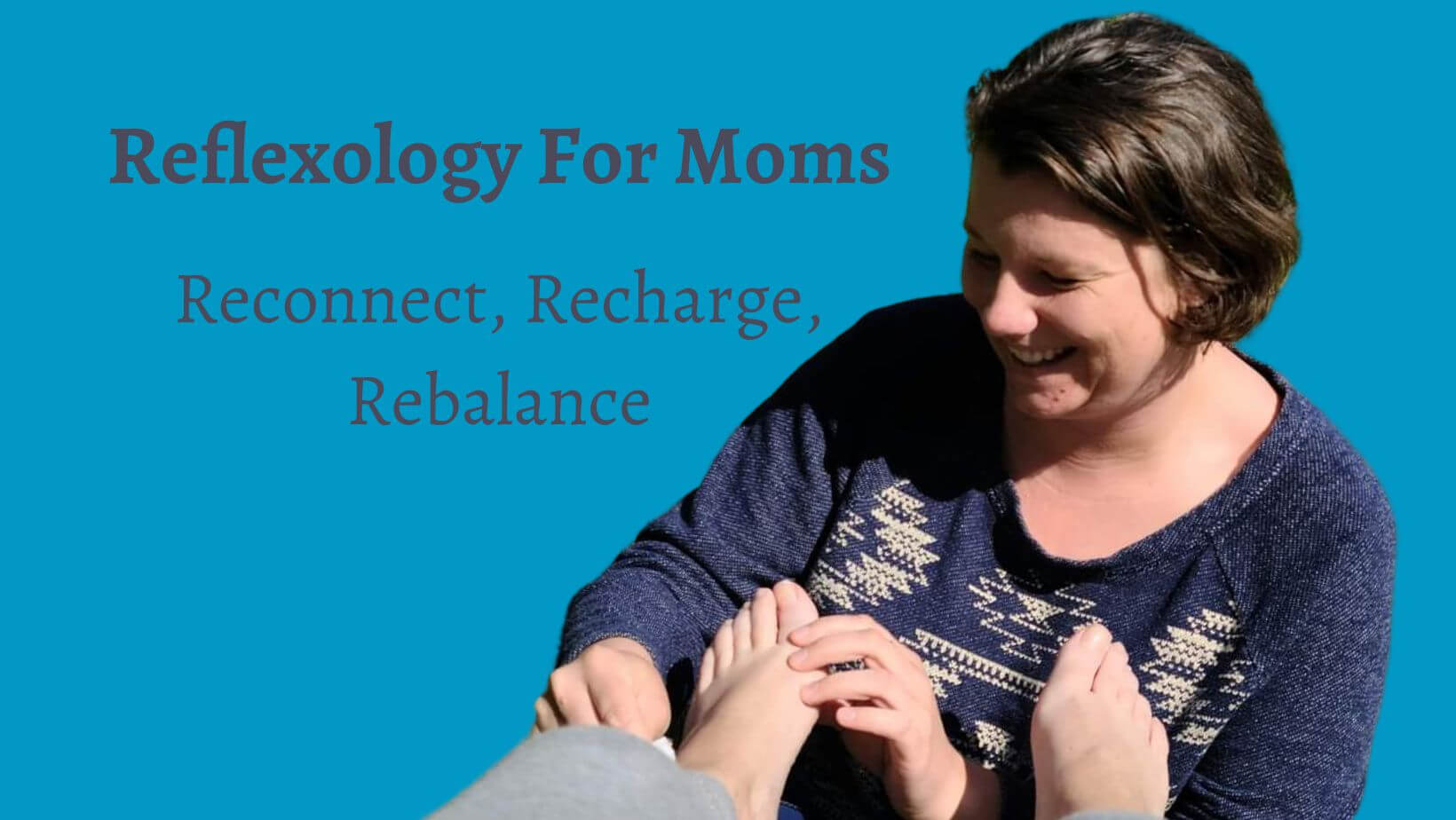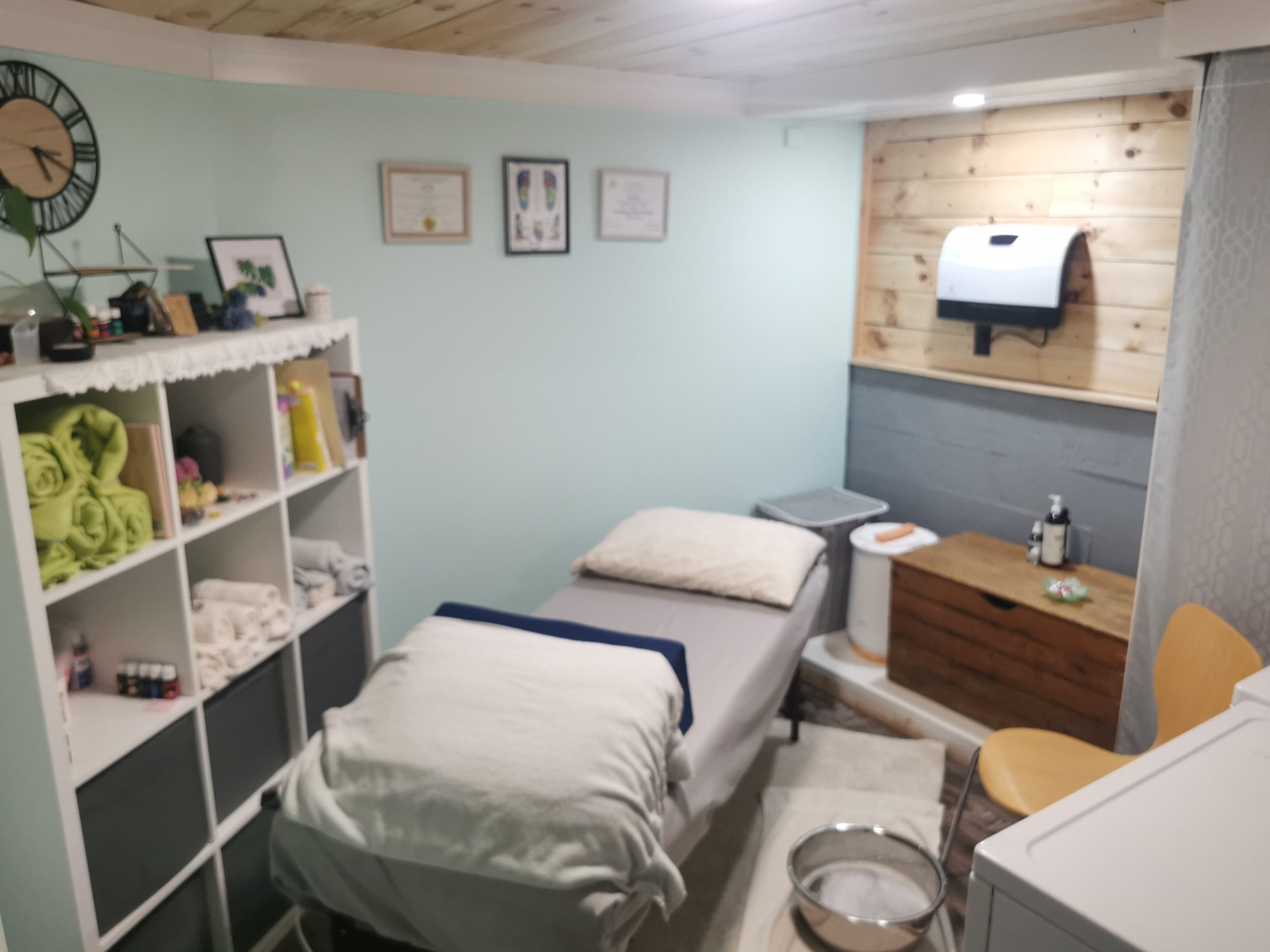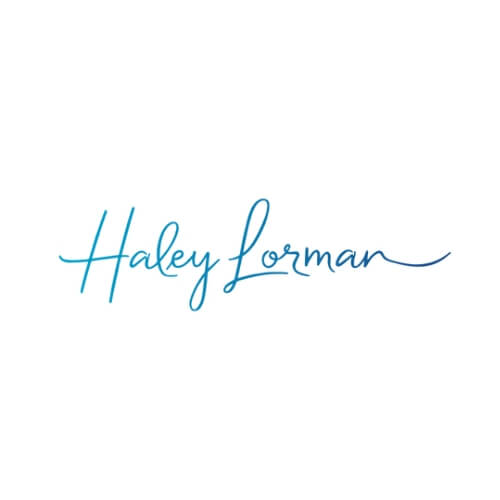
The Hidden Network: How Fascia Connects and Transforms Your Body
When you think about what holds your body together, you might picture bones, muscles, or even skin. But there’s a really interesting network working behind the scenes to support, connect, and protect every part of you: fascia.
This system is often over looked. It is not only critical to movement and posture but also plays a role in how your body feels and functions on a deeper level.
As a reflexologist, understanding fascia can change how we view and address the body’s interconnected nature.
Recently, I had the privilege of attending a fascia-focused workshop with Jennifer at the Atlantic School of Reflexology. The insights I gained during this workshop have deepened my understanding of fascia and its connection to reflexology.
What Is Fascia?
Fascia is a thin, fibrous connective tissue that weaves through your entire body, connecting everything from your head to your toes. Picture it as a delicate yet strong web, wrapping around and interconnecting muscles, bones, nerves, and organs.
This system isn’t static—it’s dynamic, adapting to the needs of your body. Fascia can become more rigid or fluid depending on movement, stress, or injury. Specialized cells, called fasciacytes, produce a lubricating fluid that allows its layers to glide smoothly over one another, essential for flexibility and optimal movement.
The Role of Fascia in Your Body
- Structural Support
Fascia provides a framework that supports and separates muscles, organs, and other structures. It distributes forces generated by movement, allowing for coordination and balance. - Sensory Function
Fascia is now considered the body’s largest sensory organ, with over 250 million sensory nerves transmitting vital information to the brain. It plays a key role in proprioception (your body’s awareness in space) and interoception (internal sensations). How wild is this?! - Protection and Regulation
Fascia acts as a resilient barrier, shielding delicate tissues from injury and regulating vital functions like temperature control by insulating the body. - Interconnection
Everything in the body is connected through fascia. A restriction or injury in one area can ripple through the system, impacting seemingly unrelated parts. For example, tension in the foot’s fascia can influence posture and even affect the neck.
Fascia and Reflexology
In reflexology, understanding fascia opens new doors to holistic healing. The plantar fascia, a strong band of tissue supporting the arch of the foot, plays a critical role in absorbing shock and maintaining stability. By working on this area, reflexologists can influence not only the feet but also the entire fascial network.
Fascial Lines in Reflexology
Research by Tom Myers reveals that fascial lines, or anatomy trains, connect muscle groups and tissues throughout the body. These lines impact movement, posture, and overall well-being:
Research by Tom Myers reveals that fascial lines, or anatomy trains, connect muscle groups and tissues throughout the body. These lines impact movement, posture, and overall well-being:
- Front Line: Supports posture and coordination.
- Back Line: Maintains balance and upright stability.
- Deep Front Line: Provides grounding and core stability.
- Spiral Line: Facilitates twisting movements.
- Lateral Line: Enables side-to-side motion.
By targeting reflex points, we can give the body "suggestions" to release tension and restore balance.
Keeping Fascia Healthy
- Stay Active
Movement is essential for fascia health. Prolonged stillness can cause fascia to lay down extra layers, leading to stiffness and microtears when movement resumes. Regular exercise helps maintain elasticity and flexibility. Jennifer provided a really great visual of this during the workshop! - Address Adhesions
Injuries and scar tissue can cause fascia to thicken and stick to surrounding layers, restricting movement. Techniques like compression, gliding, and skin rolling help "unstick" fascia and restore mobility.
Reflexology Techniques for Fascia Release
Reflexologists use specific techniques to target and release fascial adhesions:
- Pin and Glide: Apply pressure above a restricted area and glide upward to release tension.
- Skin Rolling: Gently lift and roll the skin to create space between fascia layers.
- Compression and Stretching: Press on each toe and webbing, holding for several minutes to open pathways.
- Work Above and Below: Address areas surrounding pain points to relieve fascial restrictions holistically.
The Science Behind Fascia
Fascial research by pioneers like Tom Myers and Ida Rolf has transformed our understanding of this connective tissue. Myers’ work on anatomy trains revealed how fascia connects the entire body in continuous lines, redefining how muscles and tissues interact.
Modern research, such as studies conducted at McGill University, continues to explore fascia’s role in health and movement, deepening our appreciation of this remarkable system.
Fascia is more than just a structural component—it’s a dynamic, interconnected system that influences how we move, feel, and heal. In reflexology, understanding fascia allows us to address the body holistically, creating space for optimal movement and well-being.
I feel with the insights I gained from the workshop with Jennifer at the Atlantic School of Reflexology, will profoundly enhanced my practice and ability to support clients. By staying active, hydrated, and mindful of fascial health, we can ensure this hidden network continues to support us in every step of life
Ready to Unlock the Power of Fascia?
Discover how caring for your fascia can transform your movement, reduce tension, and improve your well-being. Whether you’re a reflexology enthusiast or new to the concept, there’s no better time to take the first step!
Discover how caring for your fascia can transform your movement, reduce tension, and improve your well-being. Whether you’re a reflexology enthusiast or new to the concept, there’s no better time to take the first step!
Download The Free Guide: "3 Simple Ways to Keep Your Fascia Healthy"
This quick, actionable guide will help you stay flexible, energized, and reduced pain—starting today.
This quick, actionable guide will help you stay flexible, energized, and reduced pain—starting today.
Click the button below to grab your free guide!
Resource-Atlantic School Of Reflexology; Jennifer Johnson. Workshop on Fascia Reflexology Techniques
 Reclaiming Your Identity: Navigating Life’s Roles with Authenticity
Reclaiming Your Identity: Navigating Life’s Roles with AuthenticityNavigating Identity In A Complex Life
The modern woman wears multiple hats – mother, spouse, professional, entrepreneur – each role demanding a piece of her energy, passion, and identity. Beneath the surface of this carefully planned life lies a profound fear: the potential loss of self amidst these competing responsibilities. Have you ever experienced these questions to yourself, ‘Who am I? What do I even like to do?’
For many women, especially moms, the fear of becoming undefined by anything other than their roles is real. As responsibilities continue to pile up, there's a growing anxiety that the uniqueness of who they are becomes diluted, (in some cases, we don’t even give ourselves the chance to begin to figure out who exactly we are)
Our passions, our uniqueness, the things that fuel us are replaced by a series of functional identities that serve others but rarely celebrate the individual.
The Mental Struggles Of Identity
When a woman's sense of self becomes defined by external roles, mental struggles can be significant. The constant switching between being a nurturing mother, supportive spouse, dedicated professional, and ambitious business owner creates internal friction. Each role requires a different persona, different skills, and different emotional capacity. .
This breakdown can result in:
- Emotional exhaustion
- Diminished self-worth
- Imposter syndrome
- Chronic stress
- Potential burnout
The Ripple Effect On Personal And Professional Life
The fear of losing one's identity isn't just a personal struggle – it impacts every aspect of life. In professional settings, women might hesitate to take bold risks or showcase their authentic selves. At home, they might feel disconnected from their partnerships or parenting approaches.
Children can often sense this internal conflict. They may even unconsciously absorb the message that personal sacrifice is the ultimate form of love, which can lead to a potentially harmful generational pattern. (I am all about breaking the generational patterns that do not serve my girls and I)
Reclaiming And Rediscovering Your Identity
Confronting this fear requires intentional strategies:
- Setting clear boundaries
- Investing in personal development
- Creating dedicated self-care routines
- Seeking supportive communities
- Regular self-reflection and realignment
I have personally found that therapy, self help resources and positive mentorship have provided support in navigating these identity challenges. These resources have offered structured approaches to understanding and embracing all parts of myself. I continue to climb my ladder and embrace tools, strategies and learn every day.
The Power Of Authentic Connection
The goal isn't to eliminate roles but to integrate them authentically. Each role can be a thread in a rich, complex tapestry of identity, rather than a constraint that limits potential.
A mother who sees herself as a complete, evolving individual – not just defined by her responsibilities – models powerful self-respect for her children. She demonstrates that identity is fluid, resilient, and fundamentally self-determined.
Embracing complexity is not just survival; it's a radical act of self-love.
Remember, you don’t have to lose yourself in the process. You can thrive in your many roles while staying true to the essence of who you are. The journey of reclaiming your identity is ongoing, but it’s one worth taking. So, take a step today—embrace your identity and let it guide you to a life that’s both fulfilling and true to you.
Looking for the perfect guided meditation for your inner identity? Download it here https://haleylorman.com/page/inner-identity-meditation
 How Reflexology Can Help You Reclaim Your Energy as a Busy Mom
How Reflexology Can Help You Reclaim Your Energy as a Busy MomAs a busy mom, your days are often filled with the never-ending responsibilities of work, household chores, and caring for your family. In the midst of all this chaos, it’s easy to feel drained and overwhelmed.
If you’re searching for a holistic way to reclaim your energy and restore balance in your life, reflexology may be just what you need.
What is Reflexology?
Reflexology is an ancient therapy based on the principle that specific areas on the feet, hands, and ears correspond to different organs and systems in the body. By applying targeted pressure to these reflex points, practitioners aim to promote relaxation, relieve stress, and stimulate self-healing within the body.
Stress Relief
One of the most immediate benefits of reflexology is its ability to relieve stress. As any busy mom knows too well, stress can take a significant toll on both mental and physical health. Stimulation to the adrenal glands can support cortisol levels—the hormone primarily responsible for stress—leading to a profound sense of relaxation.
Imagine stepping into a soothing space where gentle music plays in the background as you're pampered with careful foot techniques targeting key pressure points. This experience not only alleviates tension but also offers precious moments of calm amidst the hustle and bustle of motherhood.
Balancing Hormones
Hormonal imbalances can wreak havoc on our bodies—especially during times of high stress or major life changes like pregnancy or postpartum recovery. Reflexology has been reported by many clients as an effective way to support hormonal health by stimulating certain reflex points associated with endocrine function.
For instance, one client shared her experience: “I had intense PMS symptoms and quickly noticed after my sessions, doing the focus work on the hormone system, my PMS symptoms had reduced!"
Boosting Energy
Another benefit of reflexology is its ability to boost energy levels. As a mom, feeling fatigued and depleted is all too common, but reflexology can help combat this exhaustion by enhancing circulation and encouraging the flow of vital energy throughout the body.
One mother recounted her experience: “These monthly sessions are just the reset I need. I find that after my session I feel rested and ready to jump back into my life of responsibilities. They have definitely reduced the overwhelm and stress I was experiencing before."
Real-Life Testimonials
Hearing from other mothers who have embraced reflexology can be incredibly inspiring:
1. Nancy- My experience with you has been amazing! I had heard about reflexology but wasn't sure exactly what it was and how it worked.
I feel better inside and out. I like how you explain things and give info on each thing. You have a very calming voice that is soothing. You have a very great personality and I'm glad I have met you.
I feel better inside and out. I like how you explain things and give info on each thing. You have a very calming voice that is soothing. You have a very great personality and I'm glad I have met you.
2. Sharon- In addition to the rest, relaxation and being pampered for an hour, reflexology has helped me with stress, anxiety, anger, fatigue, improved sleep, and an overall improvement of my immune system. When I leave, I always feel super relaxed and have a general sense of well-being.
3. Faye- The experience was calm, peaceful and I felt great when I left. Each time I return, its because I need to de-stress and relax which is basically the reason I return. Treating myself.
If you’re ready to take charge of your well-being as a busy mom—and reclaim your energy—consider incorporating regular reflexology sessions into your self-care routine.
Not only does it target stress relief effectively while promoting hormonal balance and boosting vitality; but it also offers valuable moments where you can focus solely on yourself without distractions.
Try exploring local practitioners or inquire about mobile therapists who might come directly to your home—the first step towards rejuvenation could be closer than you think!
Embrace this powerful tool that countless moms have already discovered; let reflexology guide you back toward an energetic life filled with joy—as well as peace amid motherhood’s beautiful chaos!
Join the Facebook group for more support and content.
Two personally development tools that can help you understand yourself and understand other in your personal life utilizing love languages and B.A.N.K. personality profile system.
Also find a free tool "Finding Your Identity" worksheet at the end and join in on the conversations over on Facebook at The Professional Overwhelmed Mom; Restoring Balance.
Read more... Find out what happens at your reflexology appointment
Find out what happens at your reflexology appointmentEach reflexologist will have a different way of conducting an appointment with their client. I will share a few examples of how a reflexology appointment may look and what a new client may expect coming into an appointment.
The space is dependent on the reflexologist. Some work in a clinical space, some in their home, while others work in a spa setting.
Some have a clinical approach while others have a holistic approach. Some blend the two approaches together.
Investment for your appointment will be dependent on location, province/state, the reflexologists experience and training.
When it comes to reflexology, wearing comfortable clothing is key. You are always fully dressed when you receive a session. Hand, body, face, foot or ear reflexology does not require the removal of clothing with the exception of socks.
Some reflexologists like to have a gentle, relaxing foot soak ready for the clients upon arrival. Others choose to simply wipe clients feet with a damp cloth or wet wipe.
There may be a massage table you lay on, face up, while the reflexologist works on you. They may also have a zero gravity chair or recliner that they prefer to use.
I personally take 5-10 minutes chatting with my clients while they soak their feet. This conversation typically sounds like me asking general questions regarding concerns they may currently have with their physical/emotional health. I ask about areas of focus and explain to the client (if it's their first time) what they can expect with pressure and tenderness.
We cannot diagnose health conditions but having a conversation regarding the health concerns and focus is very important. It helps the reflexologist plan how they will conduct the appointment.
The reflexologist will typically work through all body systems, which help the body come into its ideal balance. With the information you have given them, they will go back and work a specific protocol or treatment plan before ending with relaxation techniques.
Each reflexologist has their own routine of how they do their appointments with clients. You can't expect the same pressure/experience from one to another (just like you wouldnt with your massage therapist)
If you still feel unsure of what to expect during a reflexology appointment, call a local reflexologist in your area and ask them a few questions like
-what can I expect at an appointment with you?
-what are your credentials?
-are you registered?
-can my appointment be covered by insurance? (stay tune to next week's blog regarding this topic)
Come take a look at my current space and what you can expect to see and experience at a session with me!


